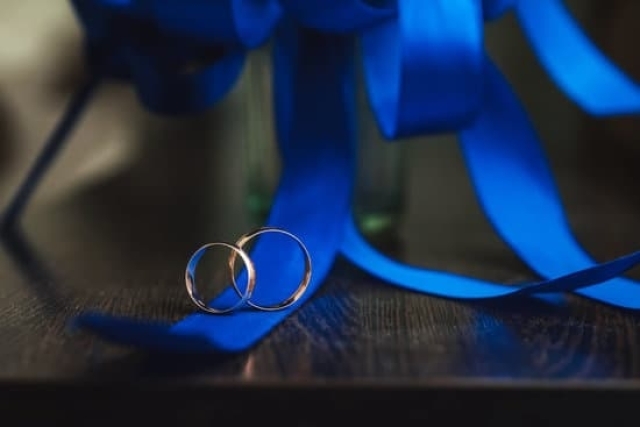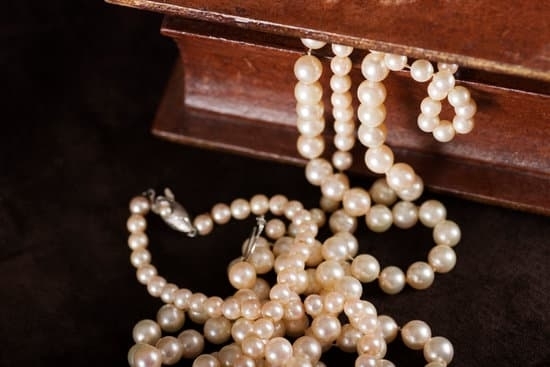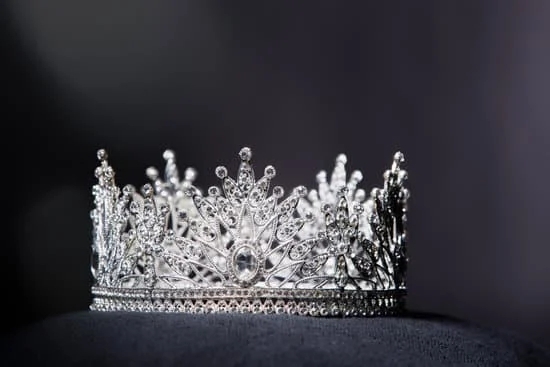Fine jewelry has a long and storied history with evidence of pieces being made as far back as 5,000 B.C. It is constructed from precious metals such as gold, silver and platinum and other materials from nature such as diamonds, sapphires and emeralds.
It’s no surprise then that these beautiful pieces of jewelry can be quite expensive but when taken care of correctly, they can last a lifetime. Here are some tips on how to keep your cherished pieces in mint condition for years to come.
Special Cleaning Manual Process
For routine cleaning and maintenance of fine jewelry, it should always be done by hand instead of a harsh mechanical process like ultrasound or steam cleaning products so as not to cause any damage. Once you have obtained the correct cleaning solution and soft cloth, apply a dab of the solution onto the surface of the piece with a cotton ball or pad before gently rubbing it dry with the soft cloth.
This is an especially effective technique when used on diamond jewelry since this will help to increase its sparkle.
Proper Storage Solutions
It’s also important to store your fine jewelry correctly so it doesn’t tarnish or get rusty over time due to exposure to moisture or extreme temperatures. The most ideal solution is to keep your pieces in airtight bags – either treated fabric pouches or plastic ziplock bags work well – if you prefer something more aesthetically pleasing, decorative boxes are available for purchase in stores that specialize in fine jewelry appurtenances.
Also avoid storing multiple pieces together if possible; try having two separate bags for earrings and another two for necklace chains as some metal types may react harshly if placed too close together thus resulting in discoloration or more severe damage over time.
Tips for How to Determine if Jewelry Needs to Be Cleaned
When determining if your jewelry needs to be cleaned, the first step is simply to look at it and determine if there any dirt or grime that can be seen. You should then use a soft cloth to gently clean away any dirt from each piece. If you can still see some areas with build-up, you may need to try an additional cleaning method.
Jewelry polishing cloths are designed specifically for this purpose and can help bring a new luster and shine to your pieces in no time. Simple jewelry cleaning solutions and liquids can also be used to restore the sparkle of your jewelry. However, it is essential that you research what type of soap or solution works best with each precious metal as certain items may require special techniques that other metals don’t.
Although it might seem like common sense, you should never clean any costly fine jewelry in water unless you are absolutely certain that the item is water safe. This is especially true when looking at porous stones such as emeralds and rubies which could absorb liquid damage easily.
Generally speaking it is best practice to avoid contact between jewellery and water altogether – even when wearing pieces, apply any spray-on cosmetics or fragrances before putting on the jewellery pieces so no liquid damage occurs.
You should also take precautions when cleaning complex settings as most contain stones or jewels set within them which can become loose over time due to moisture damage surrounding rings and necklaces for example. Take care not to use strong soaps or cleaners which could remove tarnish but may cause discoloration of gold plating over time depending on what type of antique jewellery piece it may be: again always read instructions carefully prior.
Finally ensure all grooves & crevices where dust accumulates are cleared away & removed by small brushes so dust cannot settle & dull the overall shining appearance of expensive quality jewellery products.
General Guidelines for Storing Jewelry in Various Conditions
When it comes to care and storage of fine jewelry, it is essential that you follow a few guidelines to ensure the item remains as beautiful as possible. Jewelry should be kept away from excessive heat and humidity as these elements can corrode the metal and reduce the luster of gems.
This means avoiding overly heated rooms, bathrooms, or other areas where extra moisture may be present. When items are not being worn, store them in a container such as a pouch of fabric lined with soft velvet or cotton.
If multiple pieces are being stored, nothing should rub up against each other due to pressure or friction which could cause scratches and other damage. For example, wrap gemstone rings separately before placing in the container so they do not become scuffed up against one another. Additionally, jewelry containing glass components should never be stored directly on surfaces with any type of fabric or soft coverings.
Now that we have discussed storing jewelry properly while in general use or when they’re not being worn, let’s look into the best practices for cleaning your items when necessary. A soft cloth dampened with warm water may work when attempting to clean light dirt off your pieces; but if special cleaning is needed depending on the type material used (gold, silver, pearl etc. ), manufacturers offer specific cleaning solutions safe enough to use at home.
Carefully read instructions prior to using them; they should also provide information on how often you need to clean your pieces based on its materials and usage frequency. Polarized jeweler’s fingerscopes are also helpful when examining stones for any chips and signs of wear after cleaning sessions.
Although it may seem more convenient just to toss our jewelry items onto dressers; displaying them correctly ensures maximum protection from tangles, dust build-up and accidental breakage. The last suggestion we make for keeping your treasures sparkling is regular inspections for missing stones or links – if either of those occur bring it into a trusted jewelry store immediately.
Taking even small proactive steps towards protecting our expensive items ensures that they’ll remain as beautiful over time rather than fade into nothingness relatively quickly due to neglectful behavior.
Caring for Gold Jewelry – Different Types and Methods
Gold jewelry is one of the most popular types of jewelry available. Gold is a metal that will not corrode or tarnish, which makes it an ideal metal for lifelong jewelry pieces. Still, gold can become scratched and its appearance can be altered over time due to oxidation and wear. To ensure your gold jewelry always looks its best and lasts you many years, proper care is necessary.
When caring for your gold jewelry, it is important to note what type of gold it is made from because different types of gold require different care instructions. Most fine jewelry makers use either solid gold or plated gold pieces. Solid gold is more costly than plated varieties; however, as with anything else, you truly get what you pay for when it comes to quality and longevity – with solid gold typically lasting longer than plated pieces.
Cleaning solid gold items can be done at home using warm soapy water, but if the piece contains gemstones or settings of any kind, the safest option would be have the item professionally cleaned and checked periodically (such as once per year). Plated items should generally never be washed at home; instead they should always be taken to a jeweler who can properly remove tarnish without running the risk of damaging the plate in any way.
It is also important to note how a piece will react with other metals or stones when wearing your jewelry – contact with certain harsh chemicals or cosmetics could cause scratches to the metal or damage colored gemstones. When taking off a ring it should always be removed starting at the side rather than over the stone – this helps prevent scratching on intricate designs and helps keep metals looking their best.
Finally when storing your fine jewelry, avoid letting pieces touch as this can cause scratches as well, and store items in fabric-lined boxes or wrapped in cloth bags away from direct sunlight whenever possible. By following these few simple guidelines your beautiful pieces are sure to last you many years of enjoyment.
Cleaning Silver Jewelry – Protecting Silver Tarnish
When it comes to caring for silver jewelry, the main goal is to keep it free of tarnish. While silver doesn’t require a lot of maintenance and care, it does need some attention. Properly cleaning, storing and protecting silver jewelry can elongate its lifespan and maintain its shine.
Silver jewelry should be cleaned regularly with a mild soap and warm water solution. Using a soft cloth or small brush helps to get rid of any dirt or grime that could cause premature tarnishing. After cleaning, you should always dry the silver thoroughly as this prevents water spots from forming on the surface. It is also beneficial to dry the jewelry in an area away from direct sunlight or heat for better results.
To protect silver from future tarnishing, store all of your pieces individually in airtight plastic bags away from moisture and humidity. Silver naturally reacts with sulfur compounds so separating each item prevents them from coming into contact with one another and thus keeps their surfaces untarnished.
Additionally, it is advised to add an anti-tarnish strip into each storage container as these strips absorb any odors in the air that may cause a reaction with the silver. Finally, if you plan on leaving your items out in open air, be sure they are placed in an area where they won’t come into contact with other metals such as copper or brass as this would create corrosion over time.
In addition to preventing oxidation caused by environmental factors, it also important to take precautions when wearing your pieces. Silver will react and deteriorate faster if exposed to harsh chemicals such as perfume or lotion so try not to wear items during activities involving such elements like swimming or working out until after all jewelry has been taken off. As long as you follow these basic tips concerning fine jewelry care your pieces will remain timeless.
Cleaning and Storing Gemstones – Safeguarding Against Scratching
Gemstones are an extraordinary purchase requiring extra special care. Cleaning gemstones of dirt, oil and other particles should be done using either a mild detergent, ammonia and water solution or commonly found at jewelry stores, some Gem & Jewelry cleaners. Do not use harsh chemicals like chlorine, bleach and acetone to clean your stone as they can cause discoloration or damage the surface of the stone.
Soft gems such as common opal or turquoise require extra careful cleaning attention as they can crack when exposed to solvents like household cleaner or ammonia. For best practices we recommend a light brushing with the softest brush you can find (work in a criss-cross pattern) and use of a mild soap free warm water solution.
When storing jewelry items with precious stones always store them in soft cloth pouches or velvet lined boxes that offer protection against scratches or bumps that could damage the piece irreversibly. Avoid storing multiple pieces together as metal components could rub against and scratch softer gemstones such stones as Turquoise, Sugilite, Lapis Lazuli etc.).
Pay extra attention for wrapping the pieces individually in soft material like silk cloth when carrying them around; this is particularly important for fragile items like Emeralds which can crack due to careless wearing pressure.
Particular attention should be paid to proper securing of gemstone set jewelry pieces. Before any physical activity check all clasps are properly closed to ensure the Stones do not become loose in it setting because if they did it may dislocate or fall out altogether creating endless frustration while potentially damaging the piece permanently. Remember each time you handle your piece; Stone settings should be tightened after being worn so loose prongs will not catch on anything causing potential harm.
Cleaning Pearls – Natural Cleaners vs. Chemical Cleaners
Pearl jewelry is an iconic classic that is seen in almost ever style of jewelry, and they are a treasured piece of many people’s collections. While these precious gems can look beautiful when taken offline and placed on display, wearing them regularly exposes them to dirt and oils. To keep pearl jewelry looking its best, it requires regular cleaning. Before beginning this process, you should decide whether to use natural cleaners or chemical ones.
Natural cleaners such as warm, soapy water are great for removing dirt from pearls but have their drawbacks. They may not be effective against tough stains which means more time needs to be spent on cleaning. Additionally, the softness of pearls makes traditional brushing too rough for safety reasons, meaning that polishing needs to done solely through gentle wiping and rinsing motions.
On the other hand Chemical cleaners such as mild detergents or ammonia solutions are much more effective in removing oils and stubborn grime from pearl jewels. This also saves lots of time since the bubbling action helps dislodge stuck-on residue quicker than with natural solutions.
Furthermore chemicals can help restore some of the luster to lustered pearls, giving them an extra shine they may have been lacking before the wash. However these powerful ingredients should only be used in small amounts and mixed in large quantities since they can tarnish softer metals like silver if overused.
No matter what sort of cleaner you choose – either natural or chemical – make sure that you treat your pearl jewelry with care when washing and drying it off afterwards. Pearl jewelry is delicate but if cared for correctly it will remain a timeless piece in your collection.
Cleaning and Storing Watches – Tips for Keeping them Working Properly
Cleaning watches is essential to ensuring that all the intricate parts work together correctly, and that the case and band remain scratch-free. The best way to do this is to use mild soap and lukewarm water. To clean, simply dip a soft cloth in the water, add a few drops of the soap, then lightly scrub the watch face and band.
After cleaning, rinse off with lukewarm water and allow it to dry on its own. It’s also important to refrain from using any chemical products or abrasive cleaners as this can strip away the watch’s protective plating.
Storing a watch properly is also important for making sure they last as long as possible. The best way to store your watch is in its original box, which helps cushion it against damage caused by dust or other particles. If you don’t have the original box handy, consider using an airtight container or plastic baggy with some silica gel desiccant such as baking soda or cornstarch.
These will help absorb moisture and protect against corrosion. Furthermore, be sure to keep your watches away from direct sunlight as ultraviolet radiation can discolor leather bands over time and weaken plastic parts like lids or cases containing batteries used for digital watches.
Lastly, make sure you pay attention to how often you wind your watch if it’s mechanical; wind it every 3-4 days on average for best performance according to manual specifications.
Having it regularly serviced by a certified jeweler is also recommended; typically every 3-5 years depending on usage rate so they can inspect parts like bands, bracelets and clasps for signs of wearing down or replace batteries located inside of cases used for digital watches or quartz movement ones that rely on electricity instead of being wound manually.
Ultimately following these simple guidelines will help ensure that your favorite timepieces remain running smoothly for years to come.
Conclusion
Storing and storing jewelry properly should be the primary focus whenever purchasing a piece of jewelry. Properly caring for it will help it last for many years to come. When caring for any type of fine jewelry, the main goal should be to prevent any damages from occurring in the first place.
Doing this will make sure that the piece remains in pristine condition as long as possible. There are a few additional methods that can be used to enhance the look of fine jewelry and help protect it from further damages over time.
The use of polishes is one way to restore and maintain the original shine on pieces that have become dull or tarnished over time. Polishes come in various forms such as liquids, pastes, creams, jams and wipes, so it’s important to choose one specifically designed for cleaning jewelry correctly. Applying polish too often could also damage gold plating or even removing stones due to abrasion, so caution must be taken in this regard as well.
Keep in mind that not all metals used on fine jewelry are made from pure gold or silver; some contain combinations of different alloys making them harder and more durable than pure metals alone would be. To prevent scratches on the metal parts, use a soft cloth when cleaning jewelry rather than brushes that tend scratch surfaces easily.
It is also beneficial to remember not wear certain pieces around water as chemicals and moisture can cause corrosion or discoloration on some metals overtime. With these tips incorporated into your routine and proper storage habits, you can increase the lifespan of your favorite pieces significantly.
Aside from properly maintaining your fine jewelry pieces with the steps mentioned above, there are other ideas to extend their beauty even more. Consider keeping pieces away from extremes in temperatures or harsh environments and use clear nail polish coating lightly around areas prone to wear if desired. With a little extra effort put into protecting your jewelry against damage you can keep it looking its best both now and into the future.

Welcome to my jewelry blog! My name is Sarah and I am the owner of this blog.
I love making jewelry and sharing my creations with others.
So whether you’re someone who loves wearing jewelry yourself or simply enjoys learning about it, be sure to check out my blog for insightful posts on everything related to this exciting topic!





